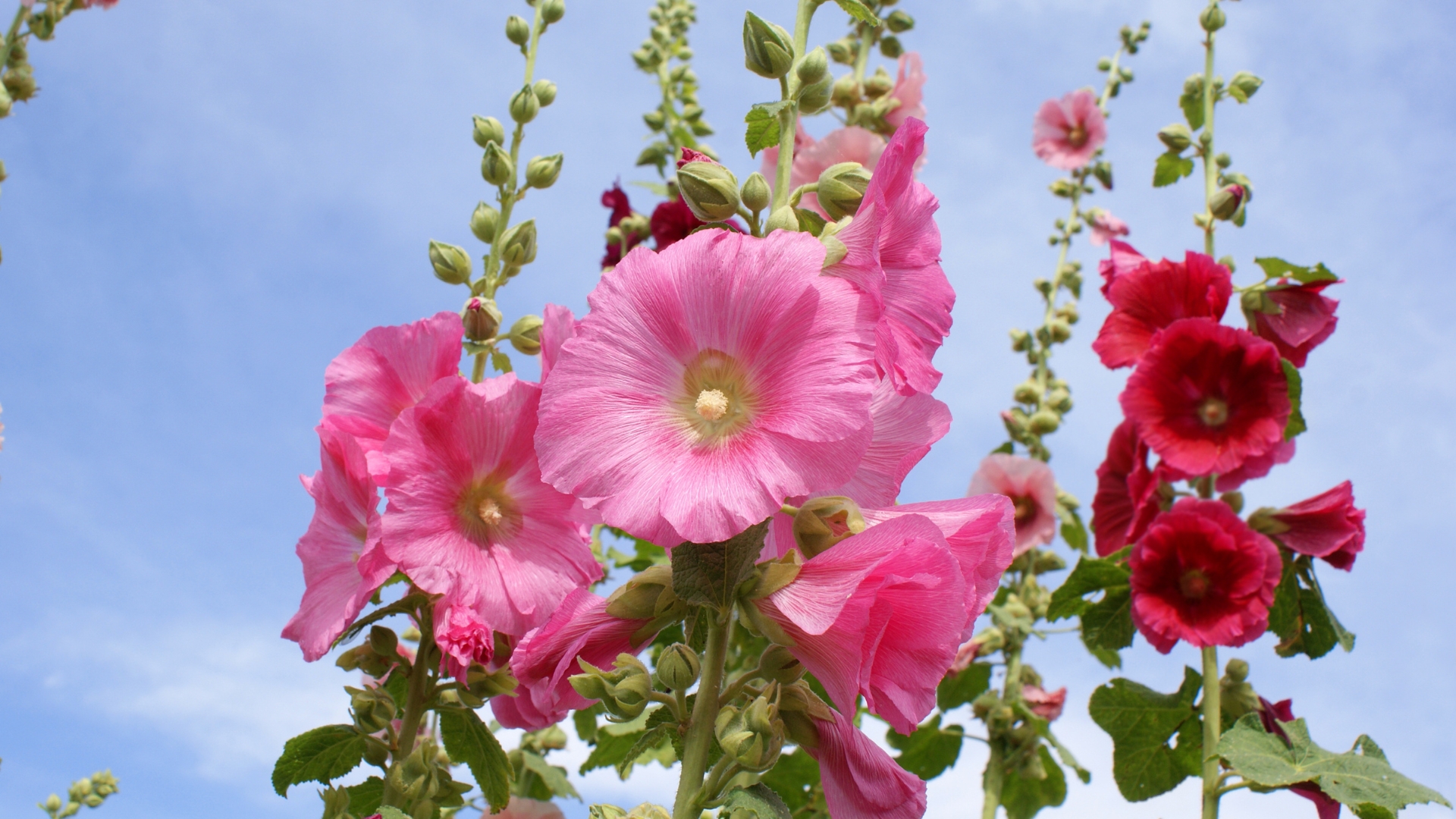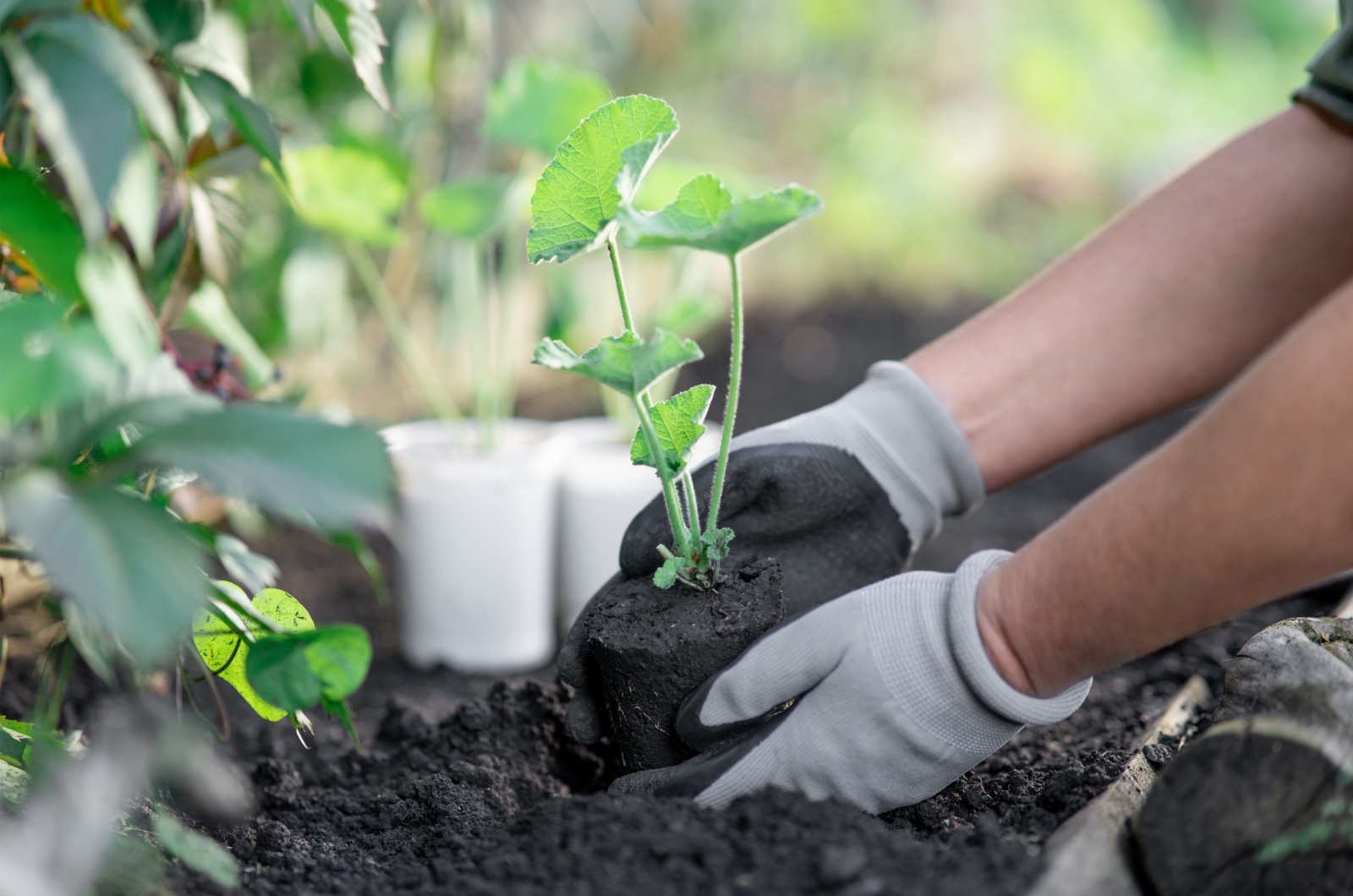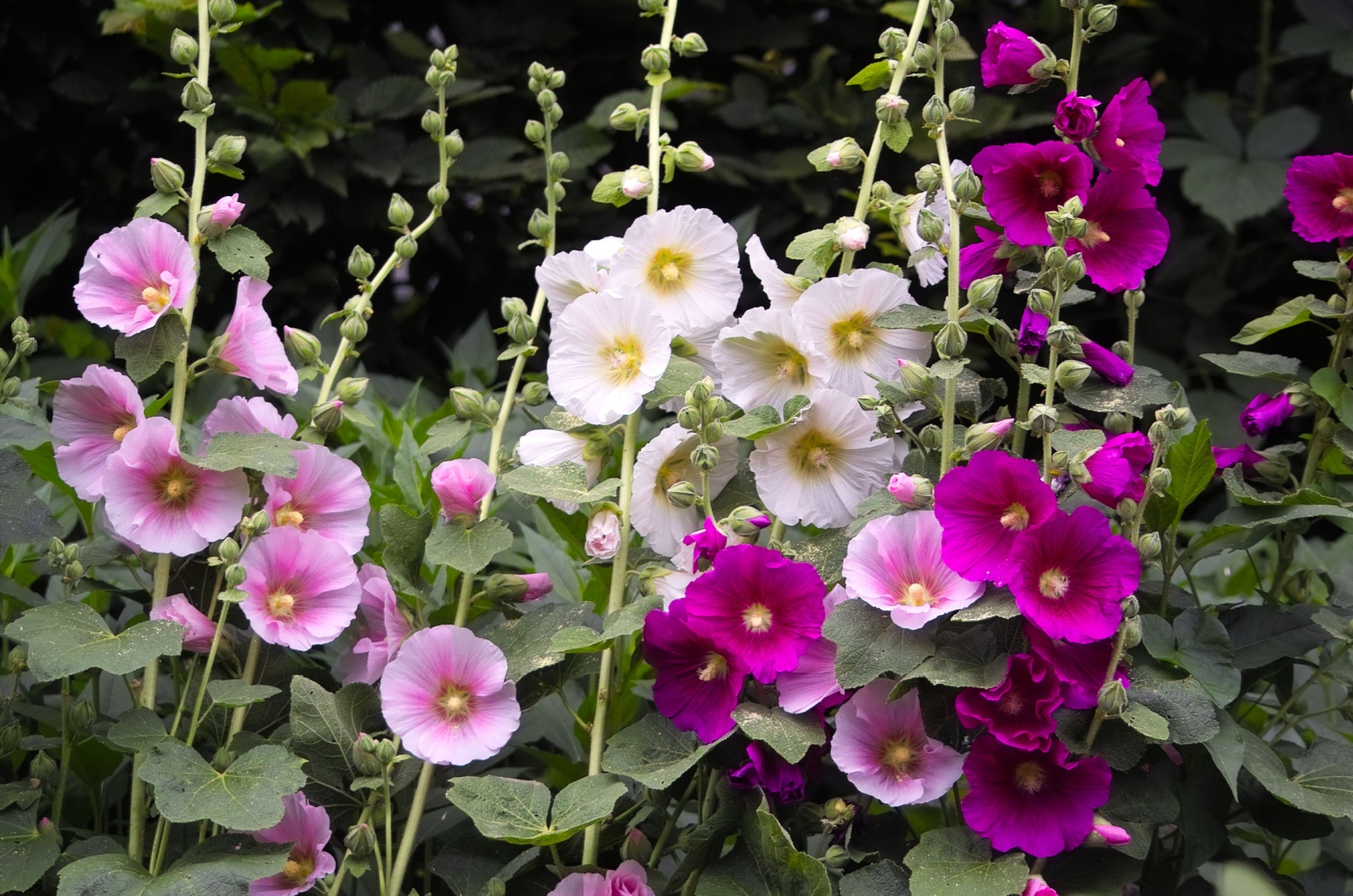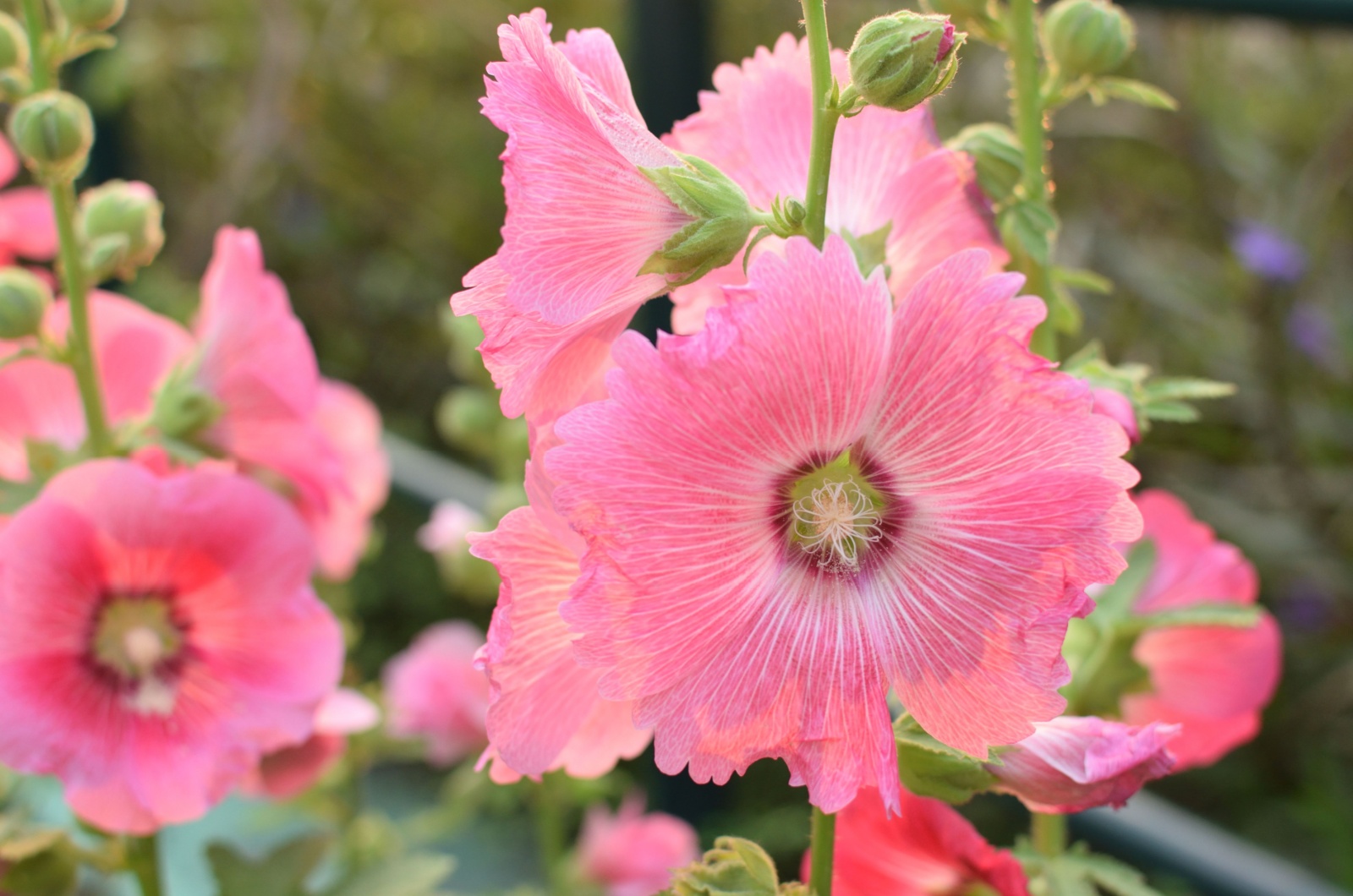Hollyhocks, otherwise known as Alcea rosea, are a staple of many flower gardens. These beautiful plants produce flower stalks that can grow as tall as 9 feet!
They can add vertical interest to the yard, towering above other plants. Plus, they are super easy to plant and care for.
If you are interested in learning more about hollyhocks, including how to plant and grow them, make sure to keep reading!
How To Plant Hollyhocks
The first thing you have to consider when planting hollyhocks is the location – you’ll have to find a place where they can grow in full sun and well-draining, fertile soil.
Sow hollyhock seeds outside before the last frost date; if you are transplanting hollyhock seedlings outdoors, wait about two or three weeks after your last frost date.
Make sure to sow the seeds ¼ inch deep (this should be enough for them to germinate adequately). Space the plants about 2 feet from one another so that they can have enough space to grow and fully develop.
Related: 9 Tips That Will Get You Vibrant Hollyhock Blooms
How To Care For Hollyhocks
If the hollyhock seeds were successfully planted, they’ll germinate and grow in no time. Afterwards, these plants will require minimum maintenance.
Please note that hollyhocks are short lived perennials, which mean that they will live up to two or three years. You can remove their flowers to extend the blooming season as they start to fade.
Gardeners who grow hollyhocks in non-tropical regions should cut them back to the ground and mulch them as much as possible.
Don’t worry about planting them again because these are self-seeding plants that will come back year after year, but only if they grow in good conditions.
These lovely flowers will benefit from occasional composting or fertilizing in the spring.
Common Issues With Hollyhocks
Although they are easy to grow and care for, these flowers still come with their fair share of problems.
The most common issue with hollyhocks is rust – this disease will typically attack the lower leaves of the plant. To avoid this disease from the start, water the plant from below and ensure good air circulation.
You can also treat rust with neem oil or fungicide. If you need more information about neem oil and fungicides, make sure to check: Copper Fungicide Vs Neem Oil: What’s The Better Option?




